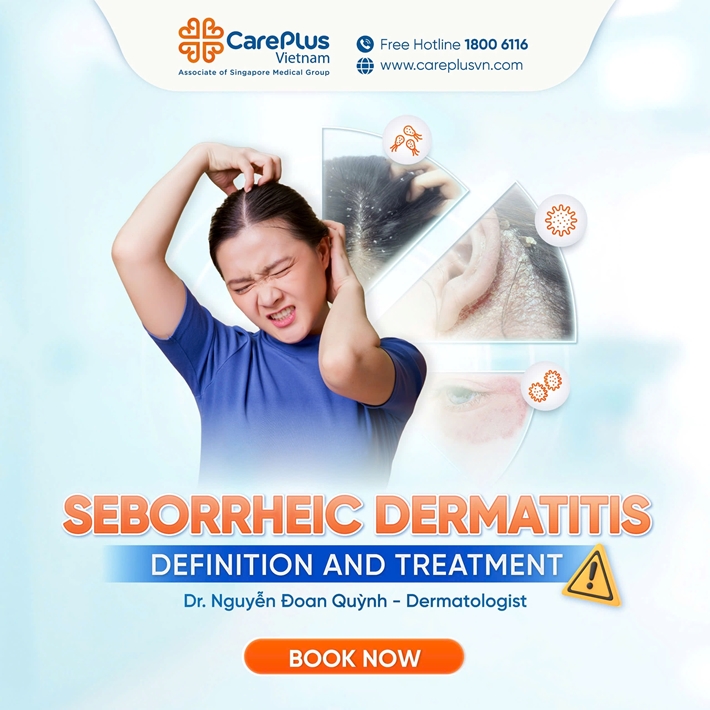SEBORRHEIC DERMATITIS - DEFINITION AND TREATMENT
Seborrheic Dermatitis, also known as seborrheic eczema or dandruff (when affecting the scalp), is a common, non-contagious skin condition. It typically occurs in areas rich in sebaceous (oil) glands such as the face, scalp, chest, and back. Due to inflammation, affected skin often appears pink or red, with white scaling and may be accompanied by itching.

2/25/2025 3:45:40 PM
PATHOGENESIS
Pityrosporum ovale (also known as Malassezia), a harmless yeast that naturally resides on the skin, is believed to play a key role in seborrheic dermatitis. When this yeast penetrates deeper into the epidermis, it can trigger an inflammatory response, leading to symptoms.
Several factors can trigger or worsen the condition, including stress and dry weather.
Seborrheic dermatitis is a chronic, recurrent skin disorder. Symptom control remains the mainstay of treatment.
PREVALENCE
Seborrheic dermatitis affects about 15–20% of the general population, with men often experiencing more severe symptoms than women. The condition is typically most severe around the age of 40.
In infants, seborrheic dermatitis commonly presents as "cradle cap," a term used to describe thick, yellowish scaling on the scalp.
SYMPTOMS
Commonly affected areas include the scalp, hairline, forehead, eyebrows, between the eyebrows, eyelids, nasolabial folds, beard area, underarms, chest, and even the groin.
-
Scalp: Symptoms often begin as white flakes (dandruff). In more severe cases, red patches with scaling may appear.
-
Other areas: Symptoms can vary from mild to severe:
-
Mild: Slight redness with minimal scaling and no itching.
-
Moderate: Widespread redness, more noticeable scaling, and mild itching.
-
Severe: Thick, greasy yellow scales, intense redness, and significant itching.
Image Descriptions:
Scalp with white flakes (dandruff).
Red patches with white scaling on the scalp and hairline.
Red patches with greasy yellow scaling in the nasolabial folds.
Red patches with white flakes on the cheeks and beard area.
Thick, greasy yellow scales on the scalp and eyebrows of an infant, commonly referred to as "cradle cap."
SKIN CARE TIPS FOR SEBORRHEIC DERMATITIS
Most mild cases of seborrheic dermatitis can be managed at home with proper skin care, including:
-
Increase shampooing frequency: Excess oil on the scalp promotes the growth of Pityrosporum ovale, worsening inflammation.
-
Use medicated shampoos: Look for shampoos containing antifungal or keratolytic agents, such as:
-
Ketoconazole (Nizoral)
-
Selenium sulfide (Selsun Blue)
-
2% Pyrithione zinc (Head & Shoulders)
-
Salicylic acid (Vichy Dercos)
-
Coal tar-based shampoos (Neutrogena T/Gel)
-
For thick, stubborn scales: Apply mineral oil or natural oils (e.g., olive oil, coconut oil) to the affected scalp areas. Gently massage the oil into the scales, leave it on for 30–60 minutes, and then wash with a medicated shampoo to help loosen and remove the scales.
WHEN TO SEE A DOCTOR
-
If scalp symptoms do not improve after using over-the-counter dandruff shampoos.
-
If the condition worsens or spreads to other areas such as the face, chest, underarms, or groin.
TREATMENT OPTIONS
A healthcare provider may prescribe topical treatments aimed at reducing inflammation and/or controlling fungal growth.
In severe cases, oral antifungal or anti-inflammatory medications may be necessary.